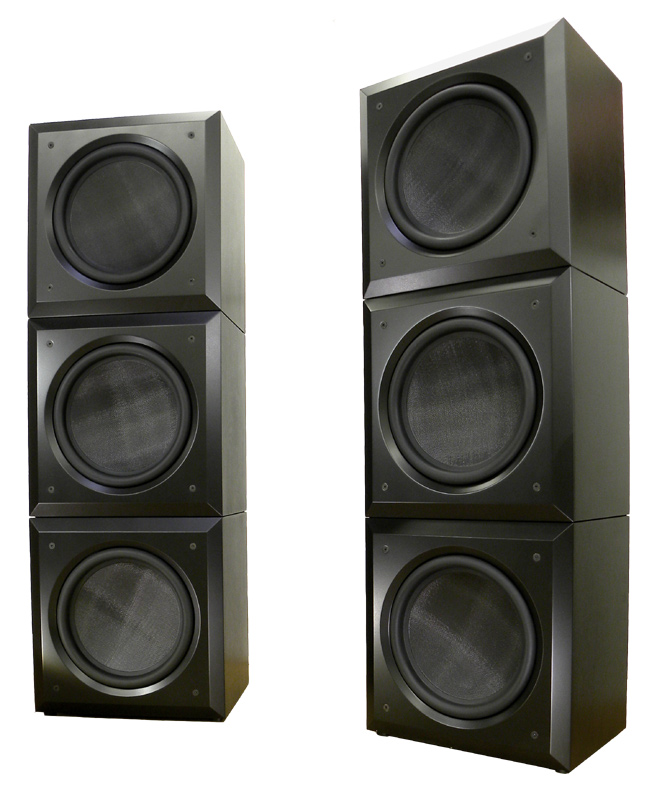Hi ib,
Much of what audioguy applies, with the exception that the DD18+ did make a big upgrade to the woofer and brought back some box size, both of which greatly helped the lowest octave vs the original DD15. The new heftier woofer did compromise the upper octave a bit, and the servo is the only thing keeping the distortion in the ballpark of our F18. Overall the F18 still has a notable output advantage in a 1:1 box comparison, while my design using the single large amplifier to power multiple units means you aren't spending 3-4x as much when you want 3-4 units per side, and keeping them working happily together is as simple as it gets (a twist-locking SpeakOn umbilical between each). The F18 has very smooth extension out past 100Hz which is quite important for detail and attack, while the response and lowest frequency roll off of the F18 is much better suited to achieving 6-10Hz in-room extension. The while still extending quite low, the DD18+ is a bit overly flat outdoors to the ~15Hz range and then turns a sharp corner cutting off most energy below 14Hz. The starting frequency response of the F18 is much easier to match with a real room, especially with the LF Adjust knob which shelves the response up/down to match your room or tastes.
In the case you did test the limits of the subs, the F18 is very well composed where you are unlikely to know you are tickling the limits unless you compared to even more units for comparison. For an actual upgrade rather than just a swap, I would suggest 3 units per side, 4 if you like the 8 ft. (2.4m) tall stack. Between our direct sale pricing and the huge cost savings in the F18+/F18-Slave approach, the set of 3 are not that far from the price of a single DD18+. Obviously the big trade here lies in physically larger boxes/stack.
Overall a stack of F18s would increase headroom and overall detail while insuring effortless output. The design of the F18 will make for smoother extension below 20Hz on down to around 10Hz in room. The headroom will also be very welcome for any EQ needed to deal with the limited placement options and acoustic challenges of your room (especially with something like a Trinnov in the mix).
I do also have 2 other versions of the F18 we worked up for custom installs called the DS18-20 & DS18-12, one having a 20" x 20" face with 23.5" depth if you needed a narrower but deeper footprint, and the other having a 30" x 26" face but only 12.5" deep. For the system you've pictured and described, I would stick with our standard F18 as they also have a more sculpted cover panel framing the impressive looking woofer, and the 18" depth works better in a wider range of placement options for typical placements keeping more options open with only a 23.5" x 17.5" (597mm x 445mm) footprint each:















